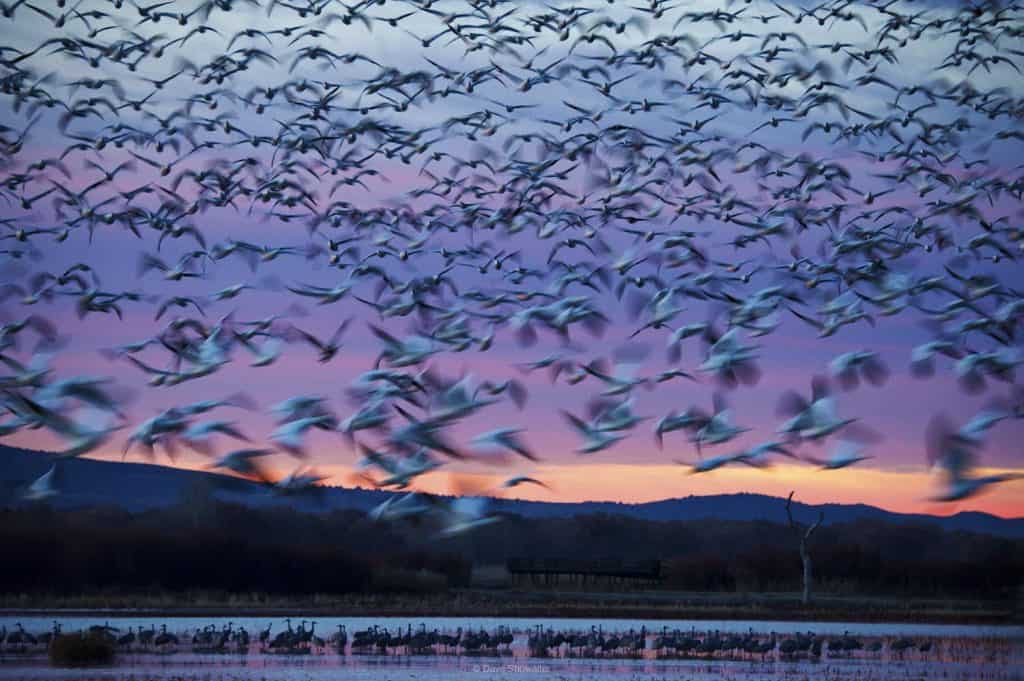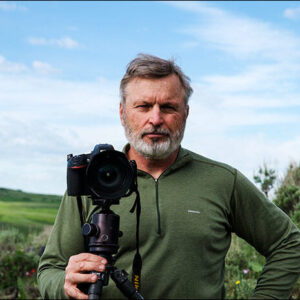When a young photographer asked that question the other day, I answered his question with the question: What do you want to say?

Before I go further, my perspective is of a conservation photographer, which is conservation storytelling, so hopefully, people will care. I started as a nature photographer wanting to tell stories that link images, make connections, and carry a story. I was active on Nature Photographers Network for around ten years. I gained a lot of inspiration here, eventually publishing Prairie Thunder, my first book with Todd Caudle and Skyline Press (2007). I’ve since published a conservation book, Sage Spirit by Braided River (2015), and am currently working on a Colorado River watershed book project. I’m also a Senior Fellow in the International League of Conservation Photographers (ILCP), a fellowship of 120 conservation photographers around the world who’ve all pledged to uphold the highest ethical standards. I teach for Summit Workshops, featuring top conservation photographers on staff, each with their own projects and visual story-telling approach.
There’s a good deal of sketchy human behavior in the wildlife photography world, and I’m sure largely driven by social media likes, which underscores the importance of being an ethical photographer who leads by example. Don’t be that person who baits owls and mammals, tramples sensitive habitat, bumps nesting birds, photographs at game farms, and generally makes us all look bad while causing harm to our subjects. To make it easy, follow NANPA’s Principles Of Ethical Field Practices and you’ll be fine: and, a couple of years ago, my friend Melissa Groo wrote these excellent Ethics From Empathy piece for Outdoor Photographer.

We can make lists of do’s and don’ts, but it simply comes down to going about our business the right way and translating our love of wild creatures to ethical field practices. Succinctly, no image is worth more than the subject.
Every photographer can be an ethical photographer and anyone can be a conservation photographer, which for me is habitat conservation in a community grounded in good science to tell a story. That’s part of why I asked the young photographer “what do you want to say?”
The other part has to do the wildlife in your mind’s eye. A big animal in a vast landscape can be just as compelling as a tight face shot. Macro wildlife opens up new frontiers, and birds in flight are all about essence and grace. Many of us begin by witnessing classic animals of the west, really wanting to make a fine image of a mule deer, great-horned owl, an eagle in flight. The witnessing part is everything to wildlife photography, the act of taking time to study behavior, and with enough time invested, being able to predict behavior is when good wildlife images are made.

The Front Range is situated on the edge of the Great Plains and Rocky Mountain foothills, and we’re fortunate to have great wildlife witnessing opportunities nearby in every direction. You can, for example, easily head east to Rocky Mountain Arsenal NWR to study and photograph nearly all the species of the shortgrass prairie in a relatively small area. The Arsenal (RMA) is where I got serious about wildlife photography while launching a book project (Prairie Thunder) about the Colorado shortgrass prairie that covers about half of our state. I’m still amazed every time I visit this “most important urban refuge in the National Wildlife Refuge System” to quote then-Interior Secretary Ken Salazar.
Early on, working photographers told me many times over to work close to home. RMA became my go-to place to use my vehicle as a blind, learn to photograph western burrowing owls from a portable hunting blind (in partnership with USFWS), witness wild bison behavior and their movements across the landscape, and view bald eagles coming off the roost in pre-dawn, returning at dusk. RMA became my laboratory to understand the seasonal rhythms of the shortgrass prairie. I started going out with researchers studying the abundance of small mammals, trapping burrowing owls (and releasing unharmed), checking kestrel nests, monitoring invasive and native vegetation plots, a mule deer mortality study, more. I still seek out experts to accompany in the field, always gaining new information, science, and perspectives of wildlife and their habitat. And, if we’re going to photograph wildlife, we need to understand and photograph their habitat because, without habitat, there’s no wildlife, no biodiversity.

We are losing prairie and sagebrush habitat rapidly, accelerating a trend over generations with corresponding wildlife declines. For whatever reason, I’m attracted to these lands where folks say, “there’s nothing out there,” or “It’s drive-through country.” What we have to say about animals and the habitat they depend on matters greatly. If I make a burrowing owl image on the prairie, I’m compelled to talk about their habitat, migration, nesting behaviors, and the joy of witnessing burrowing owls. Greater Sage-grouse require big expanses of unbroken sagebrush and is an “umbrella” species for 350 other western wildlife species. They’re also losing habitat rapidly, mostly to energy development, and their numbers are plummeting… how can I show photos of these animals without sharing information about their lives, habitats, risks, and hope that lives in people doing good work? You can tell a story in a single image or a body of work, but what we have to say is vitally important, so take time to write strong captions in your style.
Work close to home and have something to say.
If you’re at the beginning of your wildlife photographer journey, go out and photograph with the gear you own. If your lenses seem too short, make landscape images with wildlife in them. If closer, make sure the eye is sharp, shoot big lenses wide open for a soft background (also a function of distance from animal to background), shoot in good light, experiment with angles, and get down low to give stature. Because you’re practicing good field ethics, you’ll be photographing animals in natural poses and with interesting behavior. Learn to move stealthily and dial in settings intuitively. Think like Malcolm Gladwell and put in your 10,000 hours… and know that we’re all a work in progress.

About gear: many of us reach a point where 300mm doesn’t get us close enough to make the images we’ve pre-visualized. But, I’m not going to be the one to tell you to go out and spend a fortune on big glass. Way back when I got serious about making wildlife images, I bought a Tokina (off-brand) 400mm f5.6 lens. A few years later, a manual 600mm f4 Nikon on eBay, followed by a couple of versions of AF 600’s, 80-400, 200-500, 500 f5.6…. the big lenses require heavy-duty support, dedicated bags, and generally cost a lot, requiring some introspection (and spousal consent) about how much we’re going to use these tools. Today, I use my little 500 f5.6 more than any of those lenses for the style of shooting I’ve developed and a desire for lightweight mobility. I’m a lot more stationary with the 600mm, and it has its place, buckled in the passenger seat (your vehicle is a rolling blind), on a big tripod when standing sentinel for songbirds, laying on my belly, and when I’m camouflaged or in a portable blind waiting for something to happen. If you’re thinking of big glass, consider renting and be mindful of the support you’ll need for that monster lens. I will say that I see quite a few of the Sigma 150-600mm lenses at workshops, a good entry into big glass photography at a reasonable price point. But, I’m not recommending or endorsing any big glass lens purchases.
I saved gear for the end because it’s the least important aspect of wildlife photography until we’ve built a strong foundation of solid, ethical field practices. The world doesn’t need any more photographers causing harm and needs more conservation stories. Have fun out there and tell a story.
What do you want to say with your wildlife photography?





